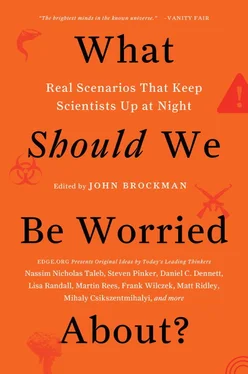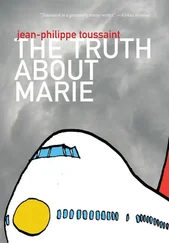We should worry about losing lust as the guiding principle for the reproduction of our species. Throughout history, human beings, guided by instincts and intense desire, have shown great wisdom in choosing partners for reproduction. Much of the aesthetic pleasure and joy we take in contemplating other members of our species is rooted in indicators for fertility, gene quality, and immune-system compatibility. Thus our lust evinces considerable prudence.
When it comes to the number of offspring, we will have collectively stabilized the world population by mid-century through decentralized decision making. This demographic transition will result not from scientific planning but from the biological cleverness of individual couples. The stabilization means that it is ever more important that the biological preferences expressed in lust dominate reproduction, since fewer babies will be born and they will live longer.
Attempts to manage reproduction through biotechnologies and screening of eggs, sperm, partners, and embryos will interfere with the lust-dominated process. That this could mean the loss of an evolved expertise in survivability is worrisome.
Moreover, the desire to reproduce leads to the advertising of good genes and general fertility through a cultural and societal display of skills and sexiness. These are major, if not dominant, sources of the unconscious drive for creating great results in science, art, and social life. Attempts to shortcut mating preferences and the matching process through clinical control could lead not only to a loss of quality in the offspring but also to a loss of cultural fertility.
RODNEY A. BROOKS
Panasonic Professor of Robotics, emeritus, MIT; chairman & chief technical officer, Rethink Robotics; author, Flesh and Machines: How Robots Will Change Us
Many recent press stories have worried that smarter robots will take away too many jobs from people. What worries me most right now is that we will not find a way to make our robots smart enough quickly enough to take up the slack in all the jobs we will need them to do over the next few decades. If we fail to build better robots soon, then our standard of living and our life spans are at risk.
Population growth and technological advance have gone hand in hand for centuries, with one enabling the other. Over the next fifty years, the world’s population growth is going to slow dramatically, and instead we are faced with a demographic shift in age profile of our population unlike anything we have seen since the Shakers—and we know what happened to them.
The one-child policy in China, now well into its second generation, has already shifted the demographics of their population in visible ways. Young married couples today are the only descendants of four parents and eight grandparents; they must steel themselves for crushing responsibilities as their loved ones age.
But there is worse from a broader perspective: China has just passed its “peak nineteen-year-old” year. Nineteen- to twenty-three-year-olds are the part of the population most drawn upon for both manufacturing and military service. The strains in China are already visible. With competition for labor increasing, we have seen working conditions and wages improve dramatically in China over the last three years. That’s good, from a moral point of view, and it’s good from a Western independence point of view, because companies are starting to insource manufacturing back to North America and Europe. But it also means that the tools we use to write and read these essays—and, indeed, the tools we use to run our society and almost all manufactured goods we buy at superstores—are going to get more expensive to build. We need productivity tools in the East and in the West, new forms of automation and robots to increase our manufacturing productivity. Over the next few years, we will become more and more desperate for smarter robots to work in our factories.
The demographic shifts visible in China are also playing out in Japan, Europe, and the United States. Our populations are aging rapidly—slightly more slowly in the U.S., as we, for now, have higher immigration rates than those other regions. While we worry about the solvency of our social security systems, there is a second-order effect that will exacerbate the problem and make life unpleasant for all of us lucky enough to grow older. The demographic shift under way will mean there are fewer younger people to provide services to more older people, and supply and demand will increase their labor costs. Good for nurses and elder-care workers, but it will further stretch the meager incomes of the elderly and ultimately lower their standard of living, perhaps below that of our current elderly and infirm.
This is the new frontier for robots. We are going to need lots of them to take up the slack doing the thankless and hard grunt work necessary for elder care—for example, lifting people into and out of bed, cleaning up the messes that occur, and so on—so that the younger humans can spend their time providing the social interaction and personal face time we old people are going to crave.
THAT WE WON’T MAKE USE OF THE ERROR CATASTROPHE THRESHOLD
WILLIAM MCEWAN
Postdoctoral researcher, MRC Laboratory of Molecular Biology, Cambridge, U.K.
Viruses replicate near the boundary of fidelity required to successfully pass information to the next generation. I worry that we will not devise a way to push them over that boundary.
We are at a strategic disadvantage in the fight against viral infection. Our genomes are large. Most of our copying errors will be deleterious to survival. We must therefore replicate our information faithfully—about 1 error in 1010 nucleotides per replication cycle is the mammalian rate. Meanwhile fleet-footed RNA viruses sample 4 orders of magnitude more sequence diversity with each generation. And a virus generation is not a long time.
But error-prone replication is not without limits. There comes a point, the error catastrophe threshold, where the replication of genetic information cannot be sustained. Beyond the threshold, the ability to replicate is lost. Gently tipping viruses over this threshold has been suggested as a therapeutic intervention. And what a beautiful idea! The error catastrophe threshold defines the boundary of the heritablility of information—the boundary of life. On the other side lies the abyss.
Error catastrophe has been modeled theoretically. In support of theory, tissue culture and mouse studies sustain accelerated mutation as an antiviral strategy. But unfortunately the same drugs that induce accelerated mutation in viruses are toxic to the host. Error-inducing drugs that are specific to particular viruses are feasible but, when compared to outright inhibitors, seem a risky game.
For now, we can delight in the recent knowledge that nature has already got there. The APOBEC3 family of genes systematically introduces errors into virus genomes, tipping them over the precipice. Viruses take this threat seriously. HIV has a gene whose function is to counteract APOBEC3. Without this gene, HIV cannot replicate. Other viruses seem to have lost the battle: The human genome is littered with the remnants of extinct viruses that bear the scars of APOBEC3 activity. Perhaps accelerated mutation was a contributing factor to these viruses’ demise. I fear that evolution’s ingenuity—accumulated at that geologically slow rate of 1010 base pairs per generation—may surpass our own, unless we can grasp this beautiful idea and devise some gentle, nontoxic tipping of our own.
A FEARFUL ASYMMETRY: THE WORRYING WORLD OF A WOULD-BE SCIENCE
HELENA CRONIN
Codirector, London School of Economics’ Centre for Philosophy of Natural & Social Science; author, The Ant and the Peacock: Altruism and Sexual Selection from Darwin to Today
Читать дальше












